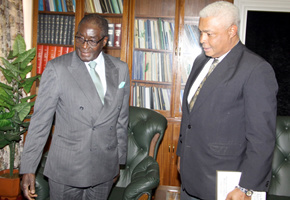Compiling a professional arts biography
existence, progress and production.
It assists viewers, curators, researchers, publicists, journalists, buyers, investors and patrons to understand the artist’s approach and personal philosophy and ultimately appreciate one’s work.
The artist’s statement does not need to expose every nuance of an artist’s work, but rather provide an overview of the artist’s purpose, achievements, background and experience.
A brief guide would be to consider what motivates the artists.
- Why do you create your art?
- What ideas inspire your art? These can be explored and noted.
- What is your unique selling point? It is what sets you apart as a visual artist. This question can briefly look at the use of technique, experimentation, culture, creed, beliefs, etc.
- Question and determine what message you are conveying in your work.
- Share your own appreciation of your work, and the emotional, social, cultural, aesthetic, and psychological impact you feel you have to achieve. For instance, mention why you use your preferred medium. What draws you to sculpture, metal art, photography or printmaking? For example, does water colour allow you to express certain ideas that oil painting does not?
- Alternatively, discuss why you are a landscape artist as opposed to a figurative sculptor or ceramicist.
- Specificity can go a long way towards branding or personalising your artistic statement.
- Use direct wording – it portrays your confidence and resolve in your work.
What to avoid
Avoid personal details, unless they relate to your art or development as a visual artist. Often I have come across biographies that say ” . . . I hate cats . . . love my dogs . . . have 10 cows . . . and have 10 children who need school fees and a sick mother. I grow maize in between sculpting”.
Such trivia only distracts any genuine interest a patron may have in your artistic work.
Avoid the words “I am an artist among other things . . .” These words expose your stupidity, insecurity and lack of focus on your profession, unless you are unusually gifted like Leonardo da Vinci, who was poet, writer, painter, sculptor, architect, scientist, mathematician, inventor, but alas, there was only one Da Vinci!
Some young Zimbabwean artists portray the image of the struggling “African artist” with cries of poverty to perceived gullible donors and NGOs in a bid to garner sympathy, believing this will soften the hearts and loosen the pockets of the potential collector – It does not work.
The truth is that it usually frightens them away, and demeans the professional artists. The lesson here is to be proud and confident of your work and achievements, but not arrogant. Collectors will place more value on you and your work.
In compiling one’s biography, words should be chosen carefully, noting verbatim. A common error is to confuse genres or style with concept. For instance, a newly graduated artist explained that he was an “Obstruct” artist, instead of saying he “created abstract art”. The lessons here is to keep it simple, it helps the interested patron and buyer to understand your work better.
The ultimate goal when you compile your artist biography is to create a supplementary, shared appreciation of you and your visual art works. This will successfully market one as a professional artist. Should one not be fluent in the language, consult a professional – they might do it for the love of art!
- Dr Tony Monda holds a PHD in Art Theory and Philosophy and a Doctorate in Business Administration (DBA) in Post-Colonial Heritage Studies. He is a practising writer, art critic, lecturer and visual artist.









Comments